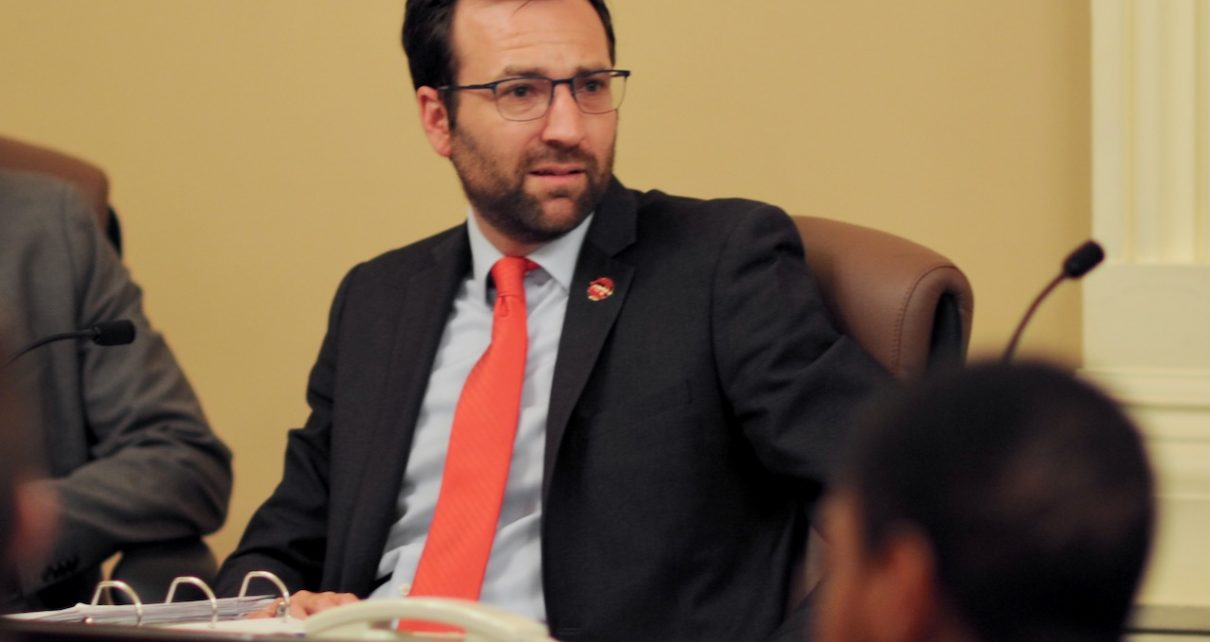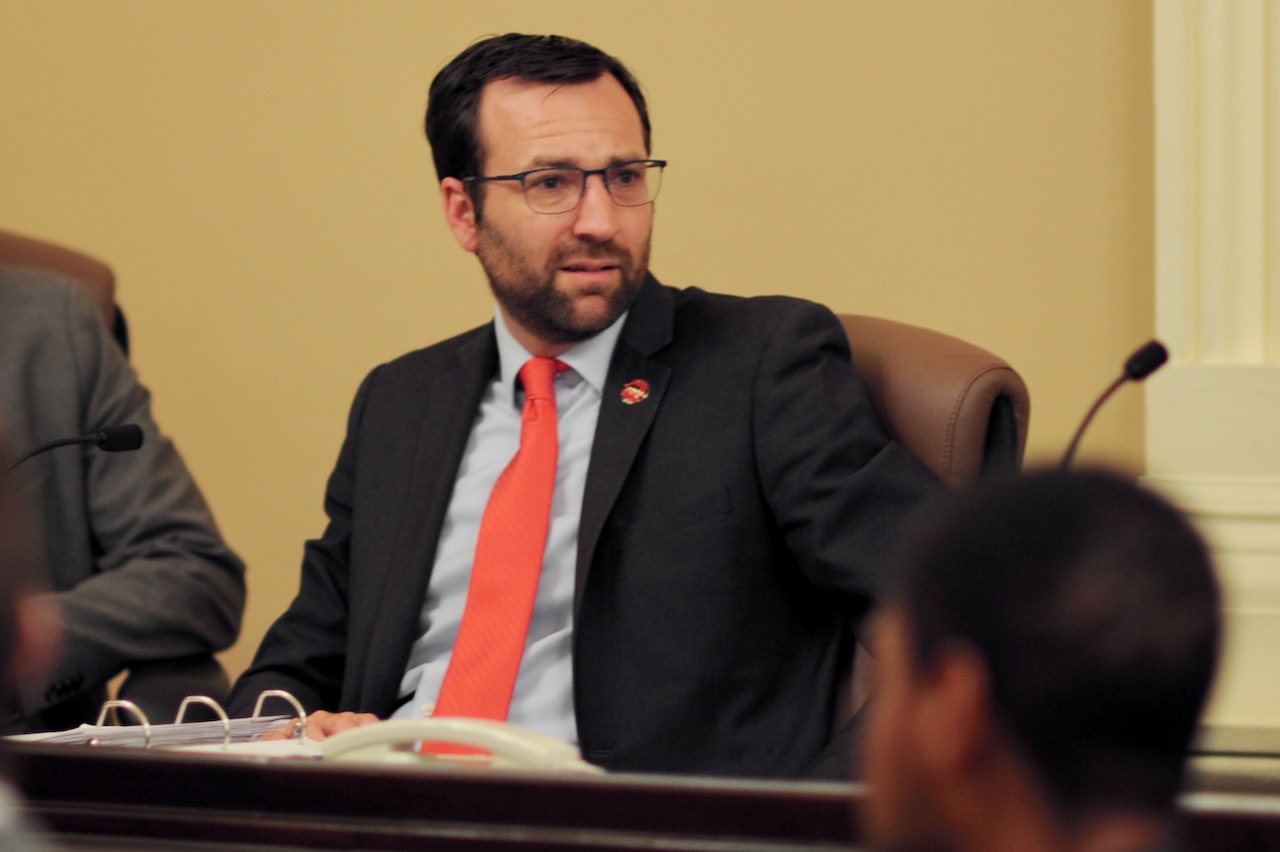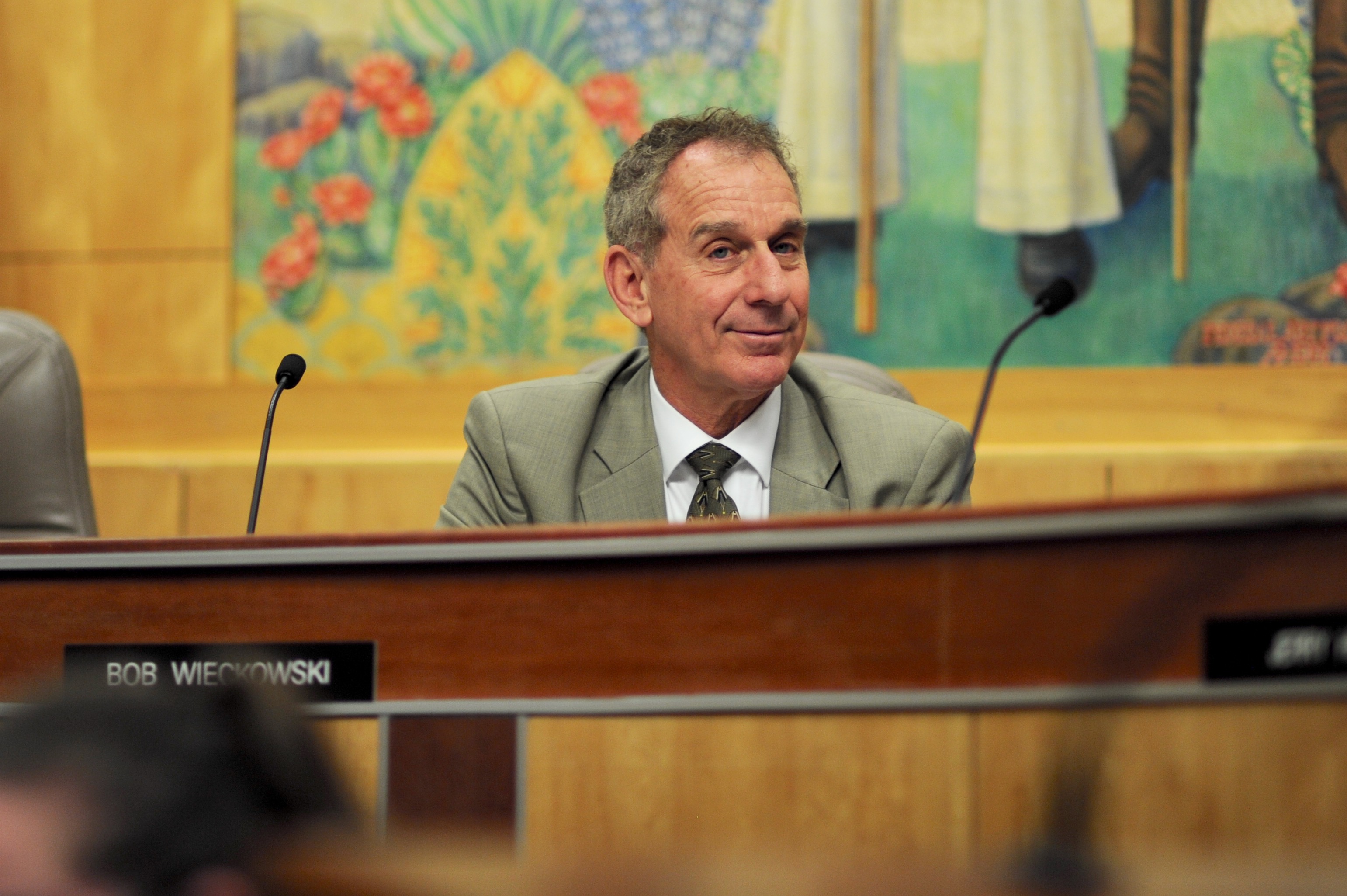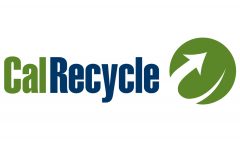
Sen. Ben Allen. (Photo: Kevin Sanders for California Globe)
SB 343 Addresses Recycling Symbols
Legislation tightens the requirements around the permissible use of the ‘chasing arrows’ recycling symbol
By Chris Micheli, October 6, 2021 2:45 am

October 5, 2021, Governor Gavin Newsom signed into law Senate Bill 343 by Sen. Ben Allen (D-Santa Monica), related to recycling symbols.
Section One of the bill amends Section 17580 of the Business and Professions Code dealing with supporting documentation being required by those who claims in advertising or on labels about consumer goods to include “through the use of a chasing arrows symbol or by otherwise directing a consumer to recycle the consumer good.” In addition, it also applied if the person uses the term “recyclable,” uses a chasing arrows symbol, or otherwise directs a consumer to recycle the consumer good, whether the consumer good meets all of the criteria for statewide recyclability.
This section of existing law also includes additional provisions that displaying a chasing arrows symbol or other directing a consumer to recycle a consumer good is not considered misleading if (1) the consumer good is required by any federal or California law or regulation to display a chasing arrows symbol, or (2) the consumer good is a beverage container subject to the California Beverage Container Recycling and Litter Reduction Act.
The new law defines the term “chasing arrows symbol” to mean an equilateral triangle, formed by three arrows curved at their midpoints, depicting a clockwise path, with a short gap separating the apex of each arrow from the base of the adjacent arrow. “Chasing arrows symbol” also includes variants of that symbol that are likely to be interpreted by a consumer as an implication of recyclability, including, but not limited to, one or more arrows arranged in a circular pattern or around a globe.
In addition, a direction to a consumer to properly dispose of or otherwise properly handle a consumer good at the end of its useful life is not considered “otherwise directing a consumer to recycle a consumer good” if the consumer good is subject to specified environmental programs and the direction to the consumer accurately instructs the consumer to dispose of the consumer good through participation in, and consistent with, one of the specified programs as that program applies to the consumer good. Nonetheless, directing a consumer to compost or properly dispose of a consumer good through an organics recycling program is not be considered “otherwise directing a consumer to recycle a consumer good.”
Section Two of the bill amends Section 17580.5 of the Business and Professions Code to exclude certain claims for violations of the Public Resources Code.
Section Three of the bill amends Section 18015 of the Public Resources Code to add a provision that the resin identification code required cannot be placed inside a chasing arrows symbol, unless the rigid plastic bottle or rigid plastic container meets the statewide recyclability criteria.
Section Four of the bill amends Section 42355.5 of the Public Resources Code to add a legislative finding and declaration that it is the public policy of the state that claims related to the recyclability of a product or packaging be truthful in practice and accurate. Consumers deserve accurate and useful information related to how to properly handle the end of life of a product or packaging.
Section Five of the bill adds Section 42355.51 to the Public Resources Code to prohibit a person from offering for sale, sell, distribute, or import into the state any product or packaging for which a deceptive or misleading claim about the recyclability of the product or packaging is made.
In addition, a product or packaging that displays a chasing arrows symbol, a chasing arrows symbol surrounding a resin identification code, or any other symbol or statement indicating the product or packaging is recyclable, or otherwise directing the consumer to recycle the product or packaging, is deemed to be a deceptive or misleading claim, unless the product or packaging is considered recyclable in the state and is of a material type and form that routinely becomes feedstock used in the production of new products or packaging.
Nonetheless, this provision does not apply to any product or packaging that is manufactured up to 18 months after the date CalRecycle publishes the first material characterization study required or before January 1, 2024, whichever is later. For a product or packaging that is not considered to be recyclable in the state, the following provisions apply:
- Displaying a chasing arrows symbol or any other statement indicating the product is recyclable directly on the product shall be deemed to be deceptive or misleading.
- If a product or packaging has multiple material types, a chasing arrows symbol or statement indicating recyclability may be displayed on the external packaging that is considered to be recyclable in the state if the chasing arrows symbol or statement makes clear in the same or greater font, font size, or symbol size which other components of the product or packaging are not recyclable.
- Displaying a chasing arrows symbol or any other statement indicating recyclability on packaging containing a consumable product shall, for purposes of this section, be deemed to refer only to the packaging. The term “consumable product” is defined for this purpose.
None of the following constitutes a deceptive or misleading claim about the recyclability of the product or packaging:
- A person using a chasing arrows symbol in combination with a clearly visible line placed at a 45-degree angle over the chasing arrows symbol to convey that an item is not recyclable.
- A consumer good that is required by any federal or California law or regulation to display a chasing arrows symbol.
- Directing a consumer to compost or properly dispose of a consumer good through an organics recycling program.
- A resin identification code placed inside a solid equilateral triangle.
On or before January 1, 2024, in order to provide information to the public sufficient for evaluating whether a product or packaging is recyclable in the state according to specified criteria and are of material types and forms that routinely becomes feedstock used in the production of new products or packaging, CalRecycle must do both of the following:
- Update the regulations promulgated to include specified information.
- To get a representative sample of recycling programs in the state, CalRecycle must conduct and publish on its internet website a characterization study of material types and forms that are collected, sorted, sold, or transferred by solid waste facilities deemed appropriate by CalRecycle for inclusion in the study.
A product or packaging is considered recyclable in the state if, based on information published by CalRecycle, the product or packaging is of a material type and form that meets both of the following requirements:
- The material type and form are collected for recycling-by-recycling programs for jurisdictions that collectively encompass at least 60 percent of the population of the state.
- The material type and form are sorted into defined streams for recycling processes by large volume transfer or processing facilities that process materials and collectively serve at least 60 percent of recycling programs statewide, with the defined streams sent to and reclaimed at a reclaiming facility consistent with the requirements of the Basel Convention.
CalRecycle is authorized to adopt regulations modifying this requirement to encompass transfer or processing facilities other than large volume transfer or processing facilities, as the department deems appropriate for achieving the purposes of this section.
A product or packaging cannot be considered recyclable in the state unless the product or packaging meets all of the following criteria, as applicable:
- For plastic packaging, the plastic packaging is designed to not include any components, inks, adhesives, or labels that prevent the recyclability of the packaging according to the APR Design® Guide published by the Association of Plastic Recyclers.
- For plastic products and non-plastic products and packaging, the product or packaging is designed to ensure recyclability and does not include any components, inks, adhesives, or labels that prevent the recyclability of the product or packaging.
- The product or packaging does not contain an intentionally added chemical identified pursuant to specified regulations.
- The product or packaging is not made from plastic or fiber that contains perfluoroalkyl or polyfluoroalkyl substances or PFAS that meets specified criteria.
A product or packaging is recyclable in the state if the product or packaging has a demonstrated recycling rate of at least 75 percent, meaning that not less than 75 percent of the product or packaging sorted and aggregated in the state is reprocessed into new products or packaging.
Before January 1, 2030, a product or packaging not collected pursuant to a curbside collection program is recyclable in the state if the non-curbside collection program recovers at least 60 percent of the product or packaging in the program and the material has sufficient commercial value to be marketed for recycling and be transported at the end of its useful life to a transfer, processing, or recycling facility to be sorted and aggregated into defined streams by material type and form.
After January 1, 2030, a product or packaging not collected pursuant to a curbside collection program is recyclable in the state if the non-curbside collection program recovers at least 75 percent of the product or packaging in the program and the material has sufficient commercial value to be marketed for recycling and be transported at the end of its useful life to a transfer, processing, or recycling facility to be sorted and aggregated into defined streams by material type and form.
Nonetheless, a product or packaging is recyclable in the state if the product or packaging is part of, and in compliance with, a program established pursuant to state or federal law on or after January 1, 2022, governing the recyclability or disposal of that product or packaging if the CalRecycle director determines that the product or packaging will not increase contamination of curbside recycling or deceive consumers as to the recyclability of the product or packaging.
In addition, the information published by CalRecycle cannot limit the discretion of a local agency under existing law to decide whether, and to what extent, a material type or form shall be accepted by a local recycling program. Finally, consistent with the waste hierarchy, “recycling,” “recyclable,” and “recyclability” do not include transformation, EMSW conversion, or production of fuels.
- Interstate Depositions and Discovery Act - December 7, 2025
- Trial by the Court in California - December 7, 2025
- Enforcement of Labor Commissioner Judgments - December 6, 2025





Real critical issues being addressed here, NOT!
“The California Legislature: finding solutions to non-problems is our specialty!”
Ridiculous waste of time. As usual.
And they failed to fix the biggest problem, i.e. the damn numbers inside the triangle are way too small to read.
Sacratomato makes mush again.
So, what, was today California Recycling Bill day???
Geebus, there were what, five recycling bills today???
What the hell???